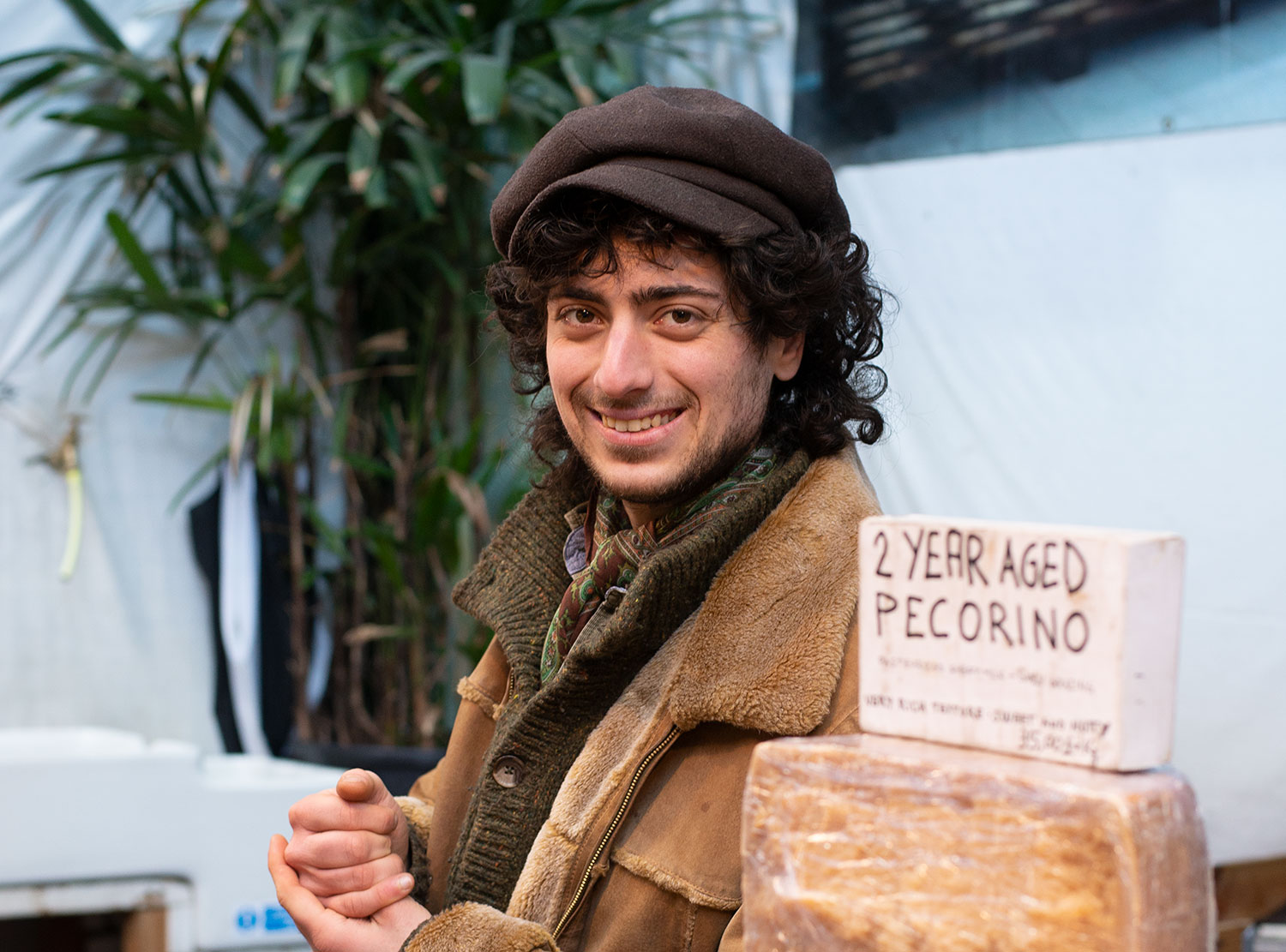London’s Best Food Market
Photos by Forrest Anderson
We’ve got our priorities. After coming into London from Paris on the Eurostar, we motored right past Westminster Abbey, Parliament, palaces and a host of other famous buildings and headed straight for Borough Market, one of the city’s best food markets.
There, we feasted on mushrooms and bread, a salt beef sandwich, hot mulled apple and pineapple juice seasoned with allspice and foaming hot chocolate. We tasted light honey infused with strawberries, sampled gourmet cheeses, bought a giant loaf of rustic bread, brownies and carrot cake and generally basked in foodie heaven.
Borough Market is one of London’s best food venues. The food is fresh, much of it is organic and the chefs are innovative, skilled and personable. Prices are reasonable and the outdoor market stall atmosphere is picturesque and fun. What’s not to love?
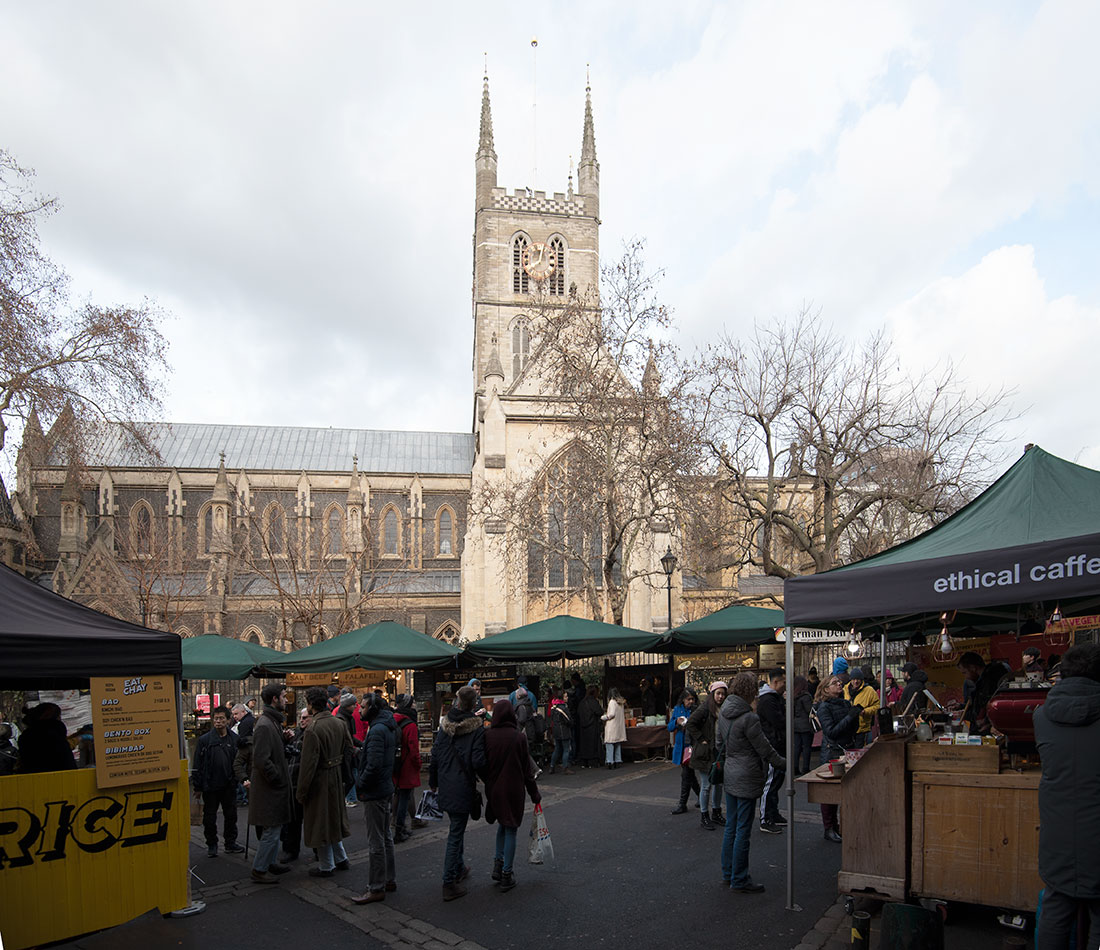
Southwark Cathedral near Borough Market.
The market, located near Southwark Cathedral on Southwark Street and Borough High Street on the south end of London Bridge, is at a site where records indicate a market operated at least as far back as the 12th century. The history of the market probably extends far back beyond that. For centuries, the London Bridge was the only route across the Thames River into London, making the market’s location a prime trading area near the wharves. It is likely that the first post-Roman bridge in London was constructed in the same area as the London Bridge in the mid-990s to strengthen the city’s defense against Viking raiders sailing up the Thames to menace the city’s residents.
In 1013, the Anglo-Saxon king Ethelred the Unready fled London for Normandy, pursued by the Danish warrior-king Sweyn Forkbeard. Sweyn took over London but a few weeks later died suddenly and Ethelred returned to reclaim the throne by force from Sweyn’s son Canute. Ethelred hired his own Viking mercenaries, including Olaf Haraldsson, later king of Norway, to regain the throne. The dubious legend is told of Olaf slinging strong cables around the legs of London Bridge and using the force of the Thames River’s current to pull the bridge down as part of the campaign that restored Ethelred to power.
A famous collection of medieval sagas by Snorri Sturluson, the Heimskringla, records the tale and includes the earliest mention of a market in the London Bridge area, noting: “On the other side of the river is a great market town called Southwark....”
In 1550, the City of London received a royal charter to control all of the Southwark markets, and the charter was confirmed in 1571. However, the market was abolished by an Act of Parliament in 1754 because it caused traffic congestion. The Act allowed for the local parishioners to set up another market on a new site, and in 1756, the market began again on a site in Rochester Yard. During the 19th century, it became one of London's most important food markets because it was near the Pool of London riverside wharves where goods came into the city.
The current market buildings date to the 1850s. The market is located underneath the railway tracks in what was an area of rough and tumble waterfront and docks on the Thames. In the 1860s, a railway viaduct was built through the market, opening it up to further expansion and trade.
Along with Covent Gardens, the Borough Market was the main wholesale supplier for retail green grocer shops during the 20th century. Those who ran stalls in the market came from all over the United Kingdom and Europe.
As the city’s population turned to supermarkets in the 1970s, the market waned until interest in natural, healthy foods again made markets popular. Today, the market is a venue for fresh and organic produce providers, artisan food makers, growers, bakers and cheese makers to sell their specialty wares. The retail market is open Wednesdays and Thursdays from 10 a.m.-5 p.m., Fridays from 10 a.m.-6 p.m. and Saturdays from 8 a.m. to 5 p.m.
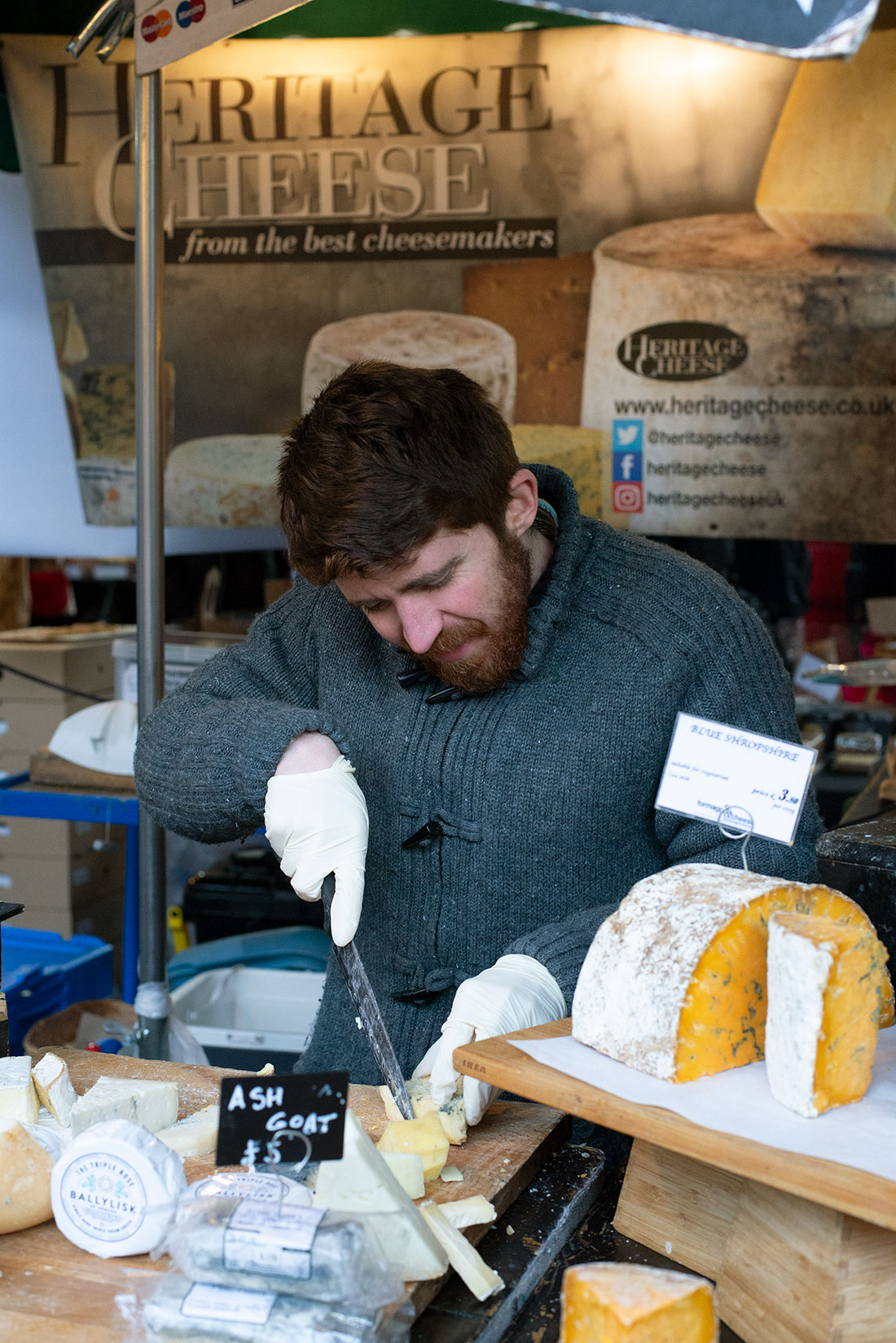
A cheese vendor.
A refurbishment project in the market area has been on-going since 2001, and the South Portico from Floral Hall, which was formerly in the Covent Gardens but was torn down when the Royal Opera House was rebuilt in the 1990s, has been rebuilt at Borough Market. Some of the market’s buildings have been removed or altered to accommodate expansion of the national rail network.
The market is run by a charitable trust of volunteers who live in the neighborhood. It has been a film location for a number of movies, including Harry Potter and the Prisoner of Azkaban (2004). The market is also hired for private events.
On June 3, 2017, eight people were killed when three attackers drove a van into pedestrians on the London Bridge and then ran toward Borough Market carrying pink ceramic knives tied to their wrists. The men slashed and stabbed people in their path. People tried to fight them off by throwing crates, chairs and glasses at them in the market. The men were shouting “This is for Allah,” one witness said. Police evacuated the area or locked down the nearby pubs. A British Transport Police officer was seriously injured when he confronted the attackers armed only with a baton, and an off-duty Metropolitan Police officer was seriously injured after rugby-tackling an attacker. Police shot and killed the attackers within eight minutes outside a pub. Those who died were from Canada, Australia, Britain, France, and Spain. Forty-eight people were injured. The traumatic event closed the market for 11 days and prompted an outpouring of public support for the market community.
The market normally is a cheery venue where one of the outdoor vendors’ biggest challenges is cold weather. The market’s blog indicates they use a variety of strategies – layers of thermal clothes, standing on cardboard to insulate their feet from the cold, drinking tea and hot lemon and honey all day, carrying hot water bottles in their apron pickets, eating hot soup and sausage rolls for energy, wearing multiple pairs of socks and using hand warmers.
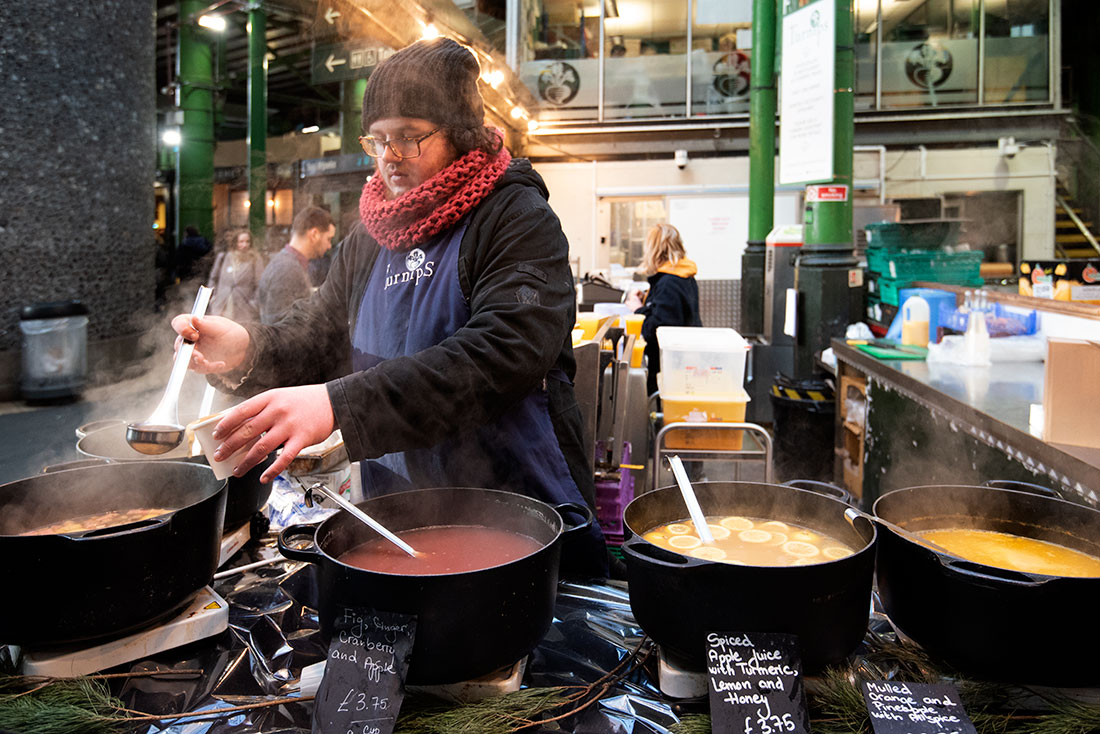
A vendor selling hot mulled juices.
Many of the vendors are friends with other venders who run adjacent stalls and they share food, recipes and join together for birthday and other celebrations. Vendors see part of their job as entertaining customers. They take pride in providing customers with not just good quality food, but interesting conversation and providing a picturesque environment for them to enjoy. They like to introduce food to customers, allowing them to sample it and sharing information about its origins and their own favorites.

Bread for sale in the market.
The market has been the venue for Kahaila, a charitable organization, to run Luminary Bakery in the area to support and help female survivors of trafficking, domestic and sexual violence and homelessness. The organization started the bakery to provide cakes for its Brick Lane café, which is its fundraising arm. Women are enrolled in baking workshops to learn bakery skills. The experience, in addition to providing the women with life skills, has helped many of them as a form of therapy.
The women can choose between employability programs where they learn baking skills and gain food and hygiene certificates; marketing, budgets and business plans; or employment at Luminary or one of the local cafes and businesses with whom Luminary has a relationship. The bakery has created a gender-safe environment for the women.
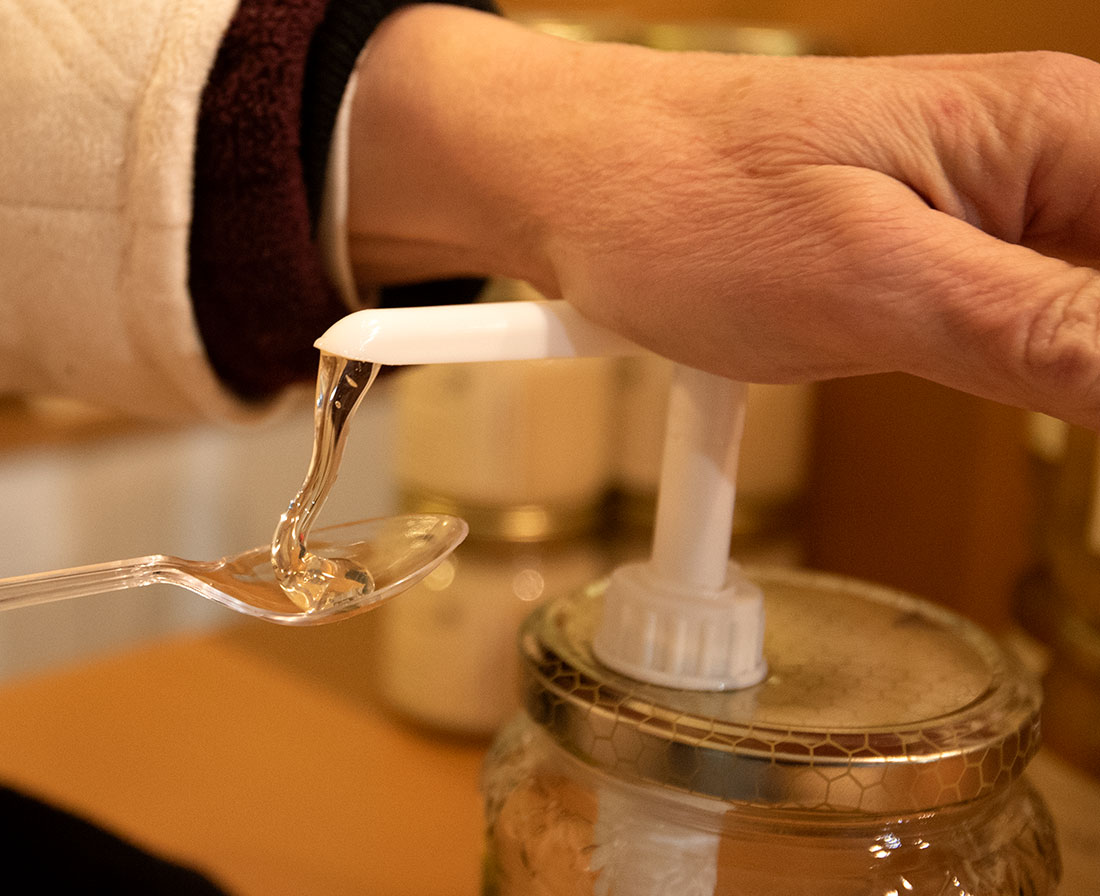
Sampling honey.
The market is noisy, crowded and quaint, and the food is delicious. Among the market specialties are cheeses, paella, pastries, spices from many different cultures sold at a shop called Spice Mountain, flavor powders for smoothies, rustic loaves of bread, fresh produce and delicious food from sandwiches and soups to shredded barbecue duck, oysters, fish and chips, truffles, gourmet olives, homemade meat pies and ethnic foods from a variety of cultures.

Olives.
One family has sold oysters in the market since 1792 and has a stand called Richard Haward’s Oysters there today. Saucisson de morteau sold at the market is made from a 16th century recipe. Many of the traders in the market are producers, while others are importers with a thorough knowledge of the cheeses, olives, honeys and other products that they sell. The vendors care deeply about the food they sell and answer questions about how it is produced and its ingredients. The market also serves top chefs who are searching for quality ingredients.
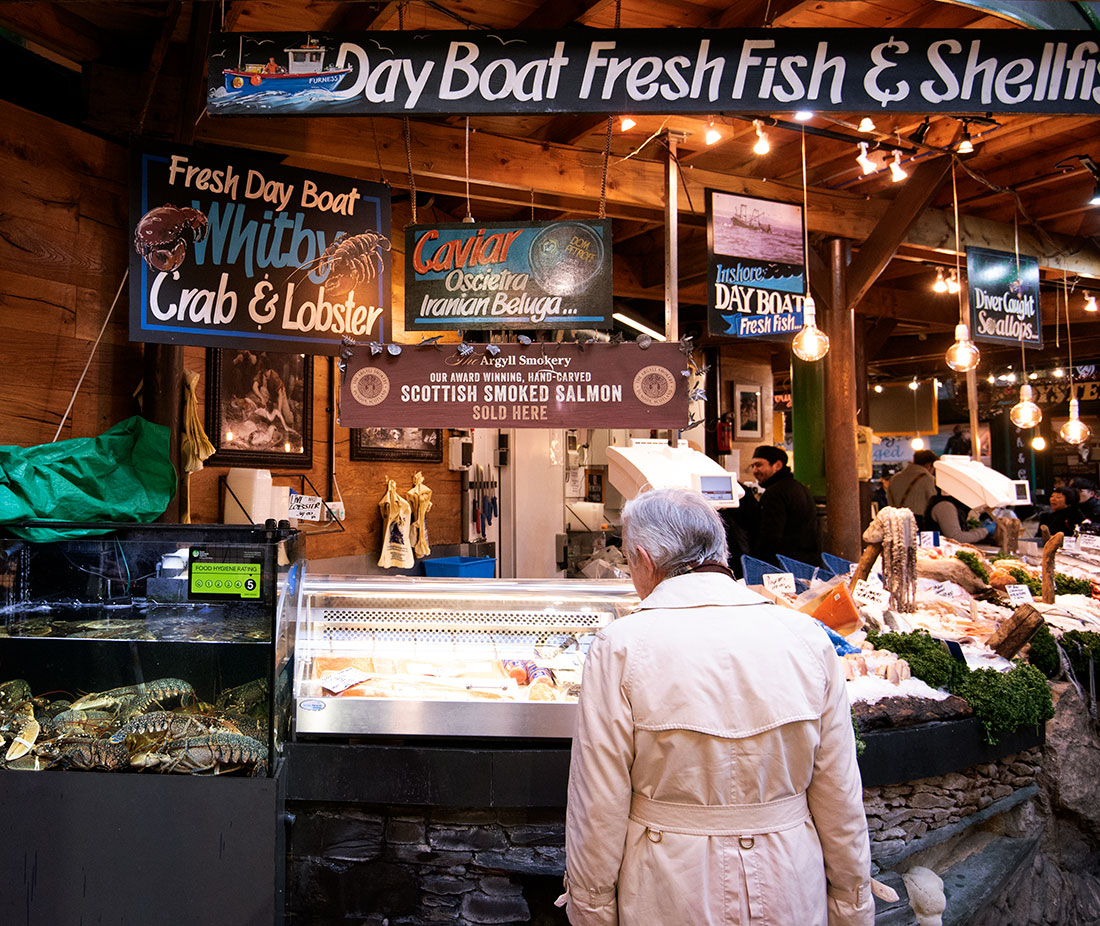
Seafood for sale in the market.
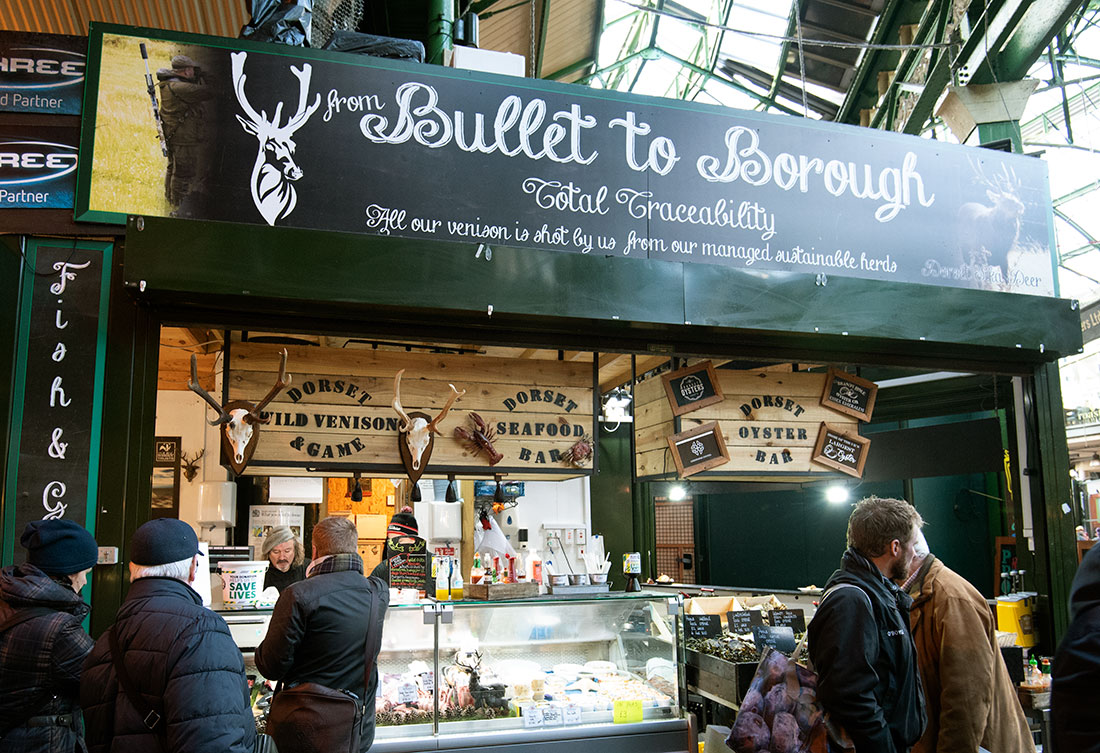
Venison for sale in the market.
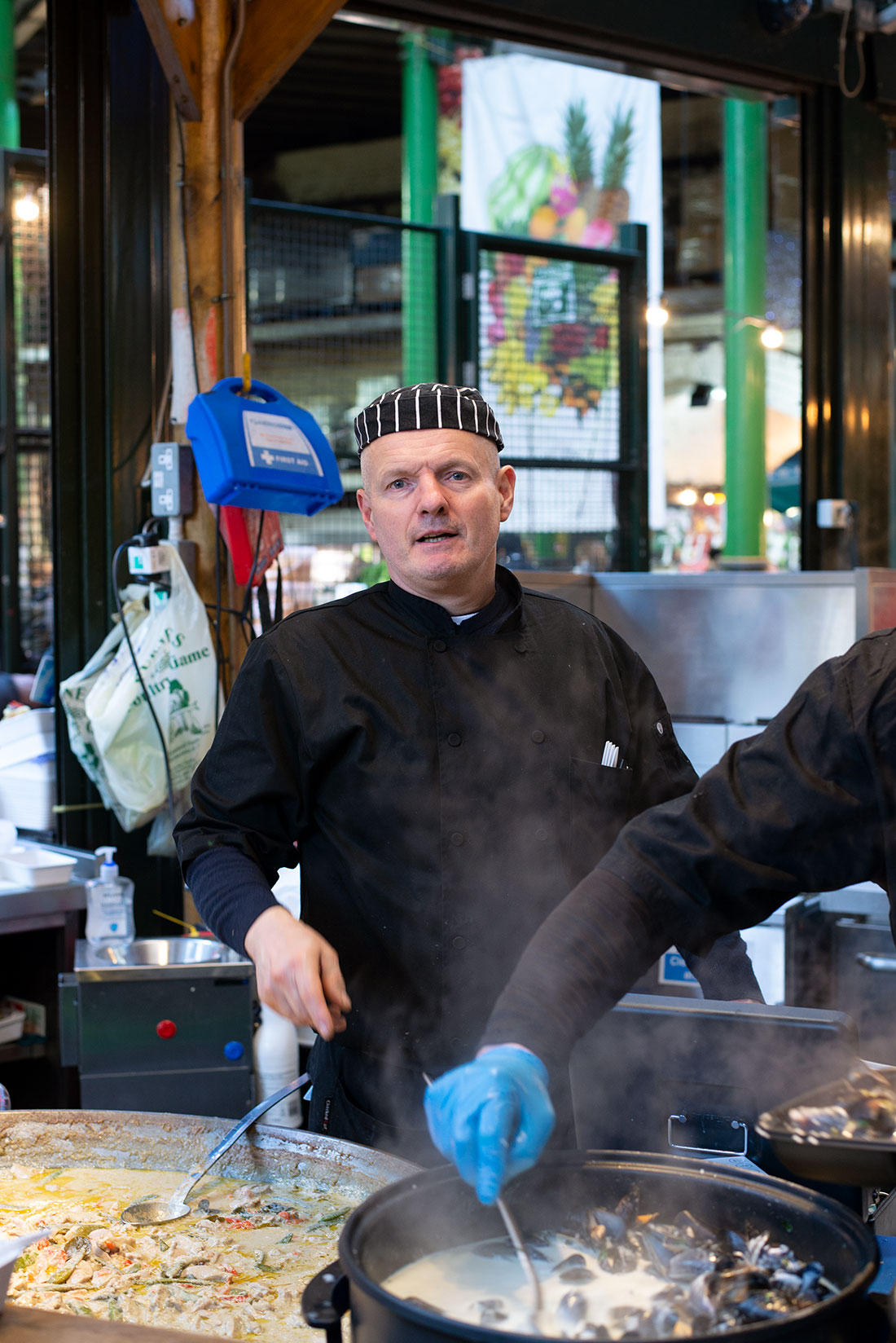
A vendor selling seafood in the market.
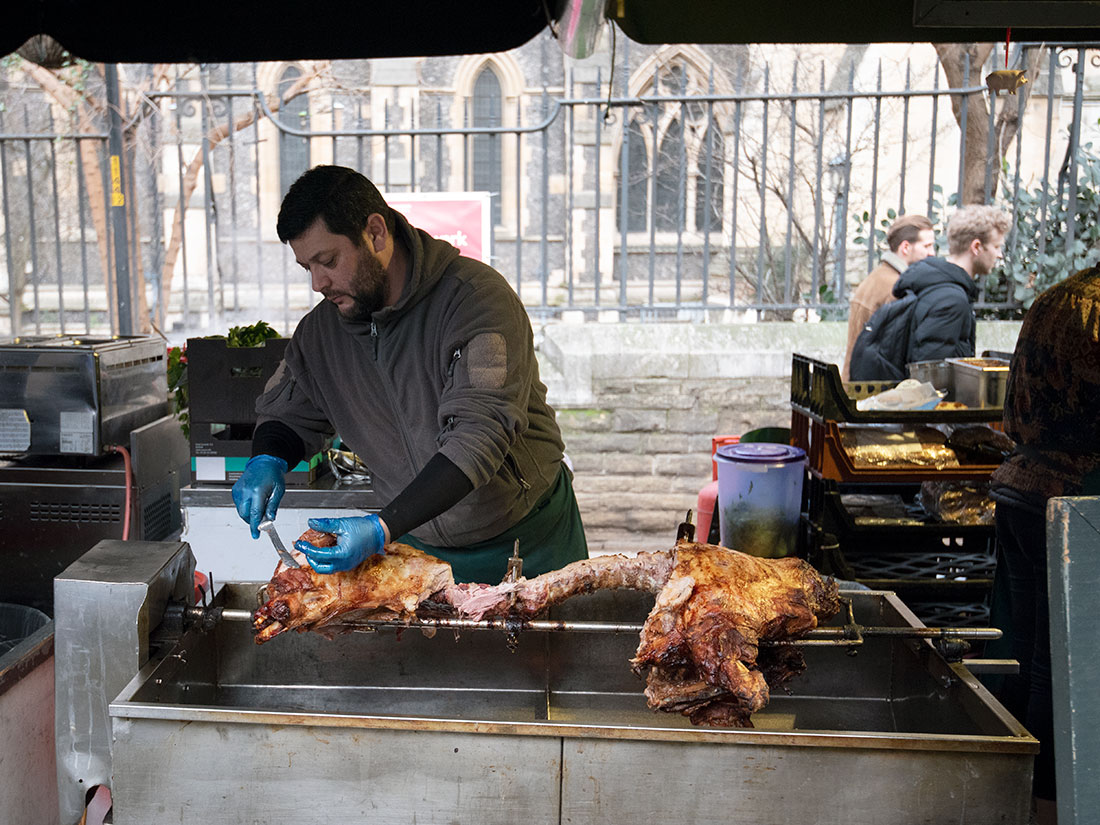
A vendor cutting roast meat.
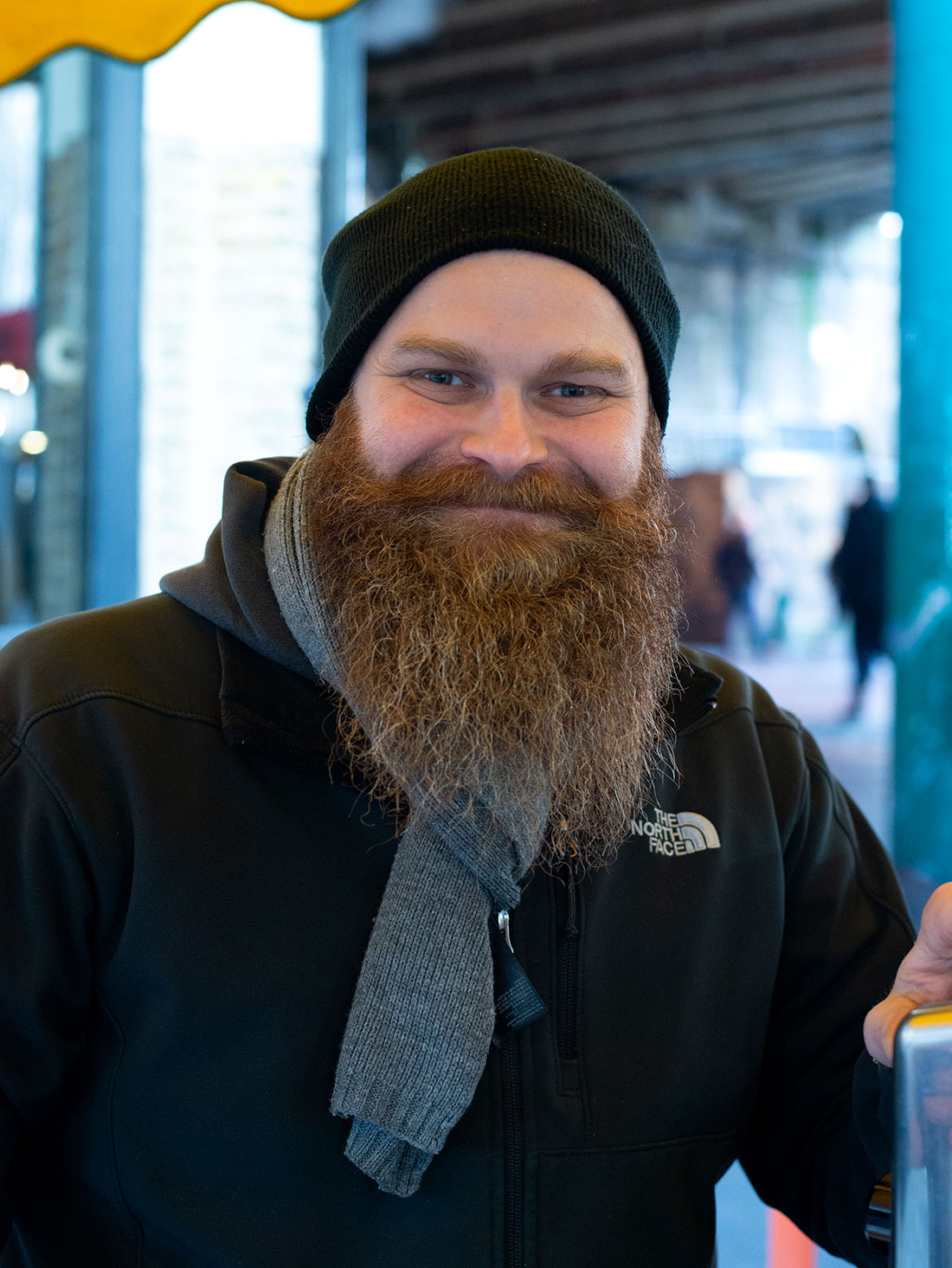
A vendor in the cold.
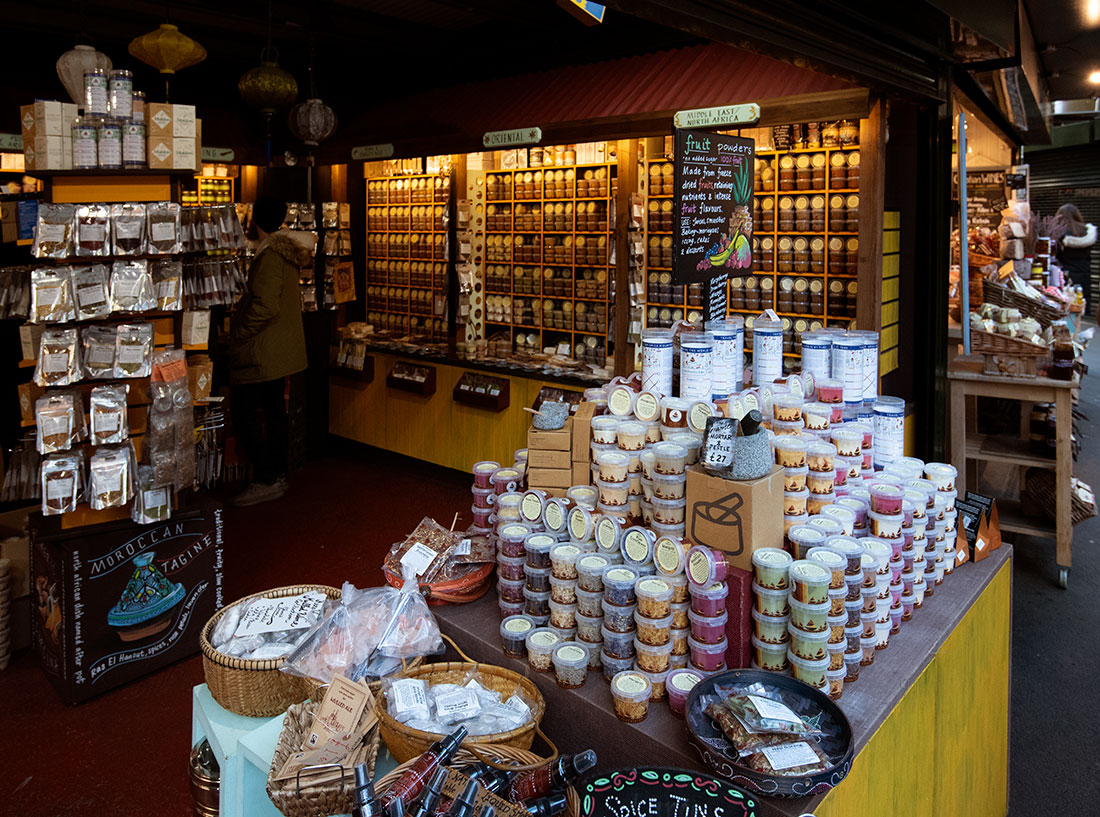
Spice Mountain, a stall in the market that sells spices from different cultures.
Check out these related items
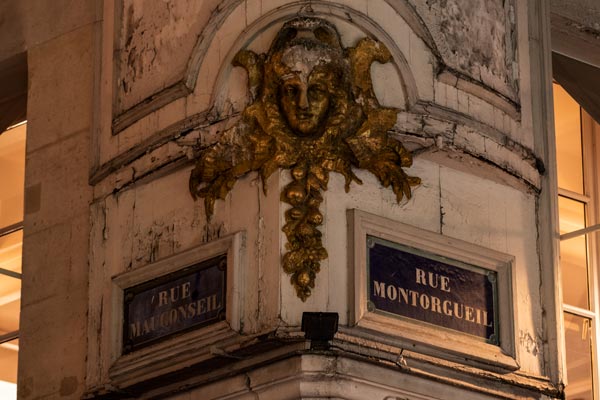
Paris’s Oldest Food Market
Rue Montorgueil in Paris began as a village street with a medieval church and food market. It has retained that character.
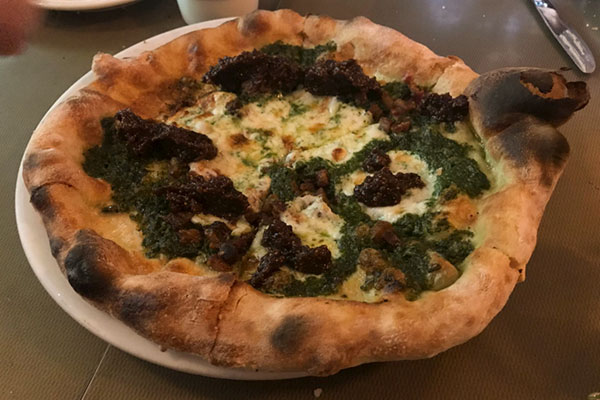
Good Things in Small Portions
Eva, a restaurant in Salt Lake City, serves a taste-testing meal on small plates, a welcome break from too much food and not enough variety.
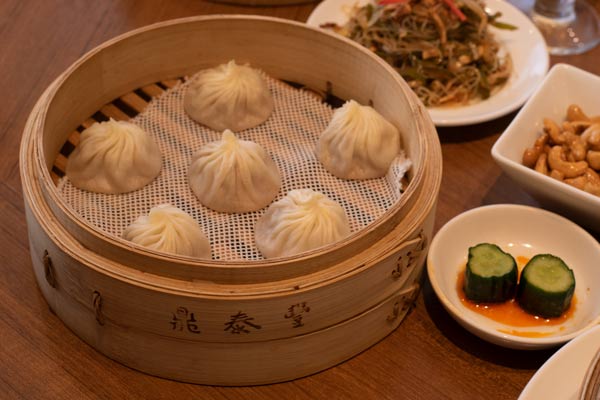
Din Tai Fung Sightings
Din Tai Fung restaurants' delicious takes on common Taiwanese foods, especially steamed dumplings, have brought a devoted global following.

Pizza on a Scale of One-to-Ken
If you're lucky enough to live in Portland, try Ken Forkish’s restaurant, Ken's Artisan Pizza. If not, try his great recipes.
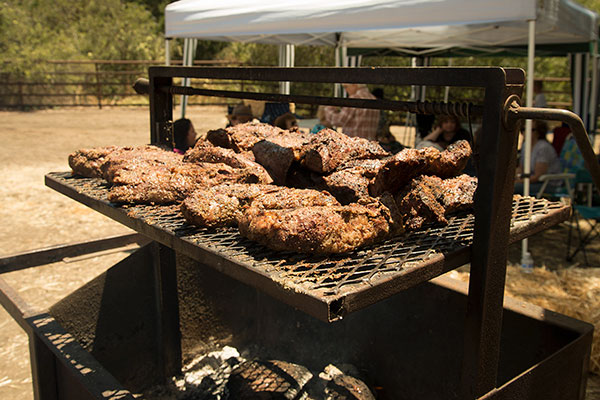
Barbecue Santa Maria Style
Santa Maria's scrumptious grilling is California's premier barbecue style.
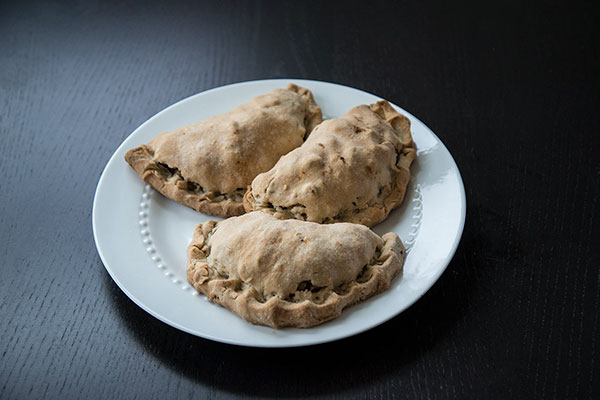
Cornish Pasties
Cornish pasties, a specialty of Grass Valley, CA, were introduced by Cornish gold miners.
